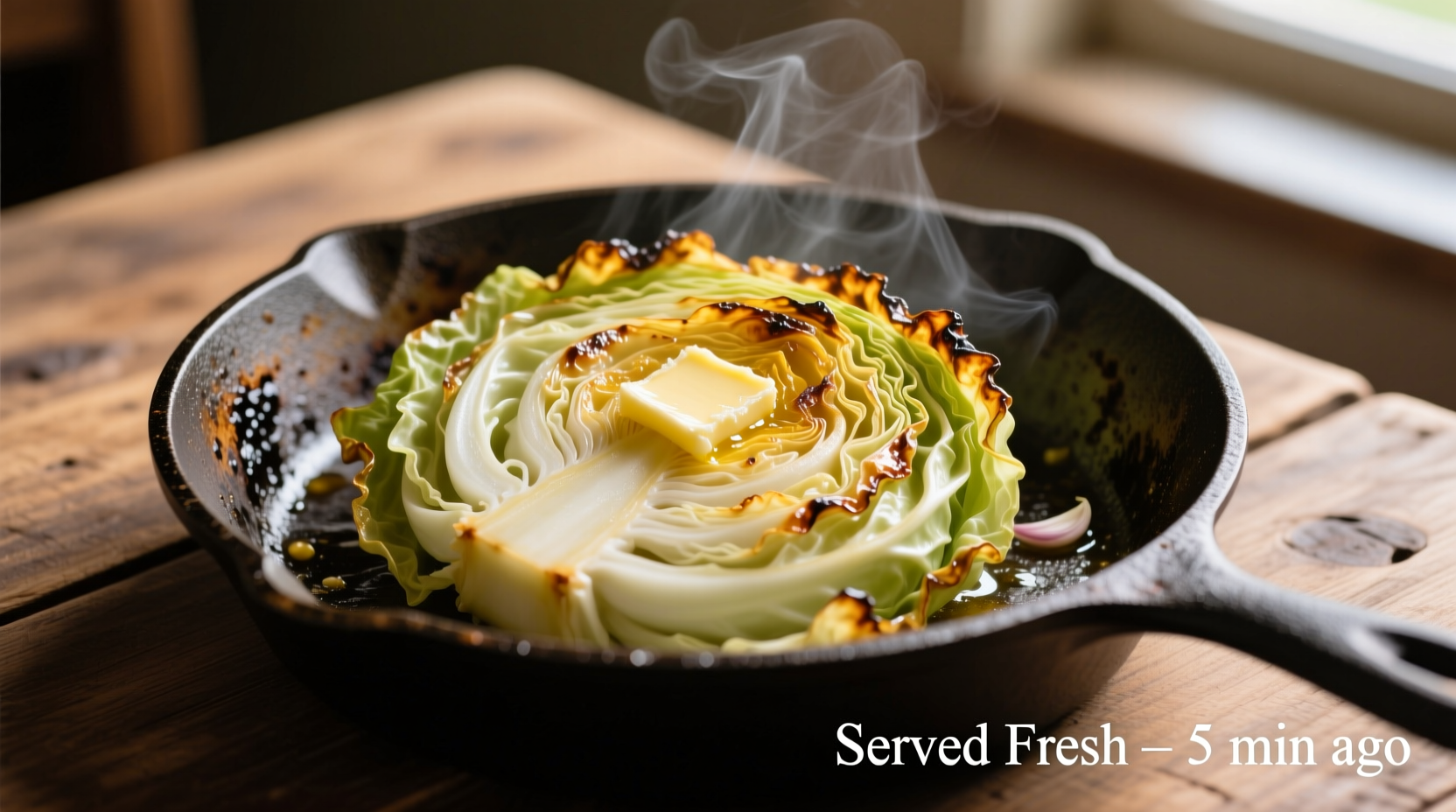Perfectly cooked cabbage should be tender but still slightly crisp, never soggy or overly pungent. The best method depends on your desired outcome: quick sauté for texture retention (5-7 minutes), gentle steaming for nutrient preservation (8-10 minutes), or slow braising for maximum flavor development (30-45 minutes). Always start with fresh, firm heads and remove the tough outer leaves before preparation.

Mastering Cabbage: From Basic Prep to Gourmet Results
Many home cooks struggle with cabbage—either ending up with mushy, odoriferous results or unpleasantly crunchy wedges. The secret lies in understanding this versatile cruciferous vegetable's unique properties and selecting the right technique for your culinary goal. Whether you're preparing a simple side dish or crafting a complex main course, proper cabbage preparation transforms this humble ingredient into something extraordinary.
Why Cabbage Cooking Requires Special Attention
Cabbage contains sulfur compounds that release strong odors when overcooked, plus enzymes that break down its structure unevenly. Understanding the glucosinolate breakdown process explains why timing and temperature control matter. When heated properly, these compounds mellow into sweet, nutty flavors rather than unpleasant sulfurous notes. The key is avoiding prolonged exposure to high heat while ensuring thorough cooking for optimal texture.
Essential Preparation Techniques
Before cooking, proper preparation sets the stage for success:
- Selecting quality cabbage: Choose heads with crisp, tightly packed leaves and no blemishes. Heavier specimens typically indicate better moisture content
- Storage methods: Keep whole heads in the refrigerator's crisper drawer for up to 2 weeks. Once cut, wrap tightly in plastic and use within 4 days
- Cleaning properly: Remove outer leaves, cut into quarters, and rinse under cold water to remove any dirt trapped between layers
- Cutting techniques: Use a sharp knife to maintain cell structure—rough chopping releases more sulfur compounds than clean cuts
Cooking Methods Compared: Finding Your Perfect Match
| Cooking Method | Time Required | Texture Result | Best For | Pro Tips |
|---|---|---|---|---|
| Saute/Stir-fry | 5-7 minutes | Crisp-tender | Quick side dishes, Asian recipes | Add 1 tsp vinegar to maintain color |
| Steaming | 8-10 minutes | Firm but tender | Nutrient preservation, salads | Use basket not touching water |
| Boiling | 12-15 minutes | Soft | Stews, soups | Add lemon juice to water |
| Braising | 30-45 minutes | Melt-in-mouth | Comfort food, winter dishes | Start with high heat sear |
| Roasting | 25-30 minutes | Caramelized edges | Gourmet presentations | Toss with olive oil first |
Advanced Flavor Development Techniques
Professional chefs use specific approaches to maximize cabbage's potential:
The Acid Balance Principle
Adding acidic elements counters cabbage's natural bitterness and stabilizes color. The optimal timing varies by cooking method:
- Quick cooking: Add vinegar or lemon juice in the last 2 minutes
- Slow cooking: Incorporate acid at the beginning to prevent over-softening
- Raw preparations: Marinate shredded cabbage in citrus dressing for 15 minutes before serving
Flavor Pairing Guide
Cabbage works with diverse flavor profiles. Consider these pairings based on your cooking method:
- European tradition: Apples, caraway seeds, bacon, and onions for braised dishes
- Asian approach: Ginger, garlic, soy sauce, and sesame oil for stir-fries
- Mediterranean style: Olive oil, lemon, capers, and fresh herbs for roasted preparations
- Modern fusion: Coconut milk, curry spices, and lime for innovative dishes
Avoiding Common Cabbage Cooking Mistakes
Based on analysis of home cooking forums and culinary research from University of Minnesota Extension, these errors cause most failed cabbage dishes:
- Overcrowding the pan: Creates steam that leads to uneven cooking and soggy texture
- Incorrect seasoning timing: Salt too early draws out moisture; add during last 5 minutes
- Ignoring variety differences: Green cabbage requires longer cooking than Napa or Savoy varieties
- Using dull knives: Crushes cell structure, releasing more sulfur compounds
Preserving Nutritional Value
According to the USDA FoodData Central, cooking method significantly impacts cabbage's nutrient retention. Steaming preserves 90% of vitamin C compared to 60% with boiling. For maximum health benefits:
- Cook with minimal water to prevent nutrient leaching
- Keep cooking times under 10 minutes for vitamin preservation
- Add a pinch of turmeric to boost antioxidant availability
- Pair with healthy fats like olive oil to enhance absorption of fat-soluble vitamins
Storage and Reheating Guidelines
Proper storage extends the life of cooked cabbage while maintaining quality:
- Cool completely before storing in airtight containers
- Refrigerate for up to 4 days or freeze for 3 months
- Reheat gently in a covered skillet with a splash of liquid
- Avoid microwave reheating which creates uneven texture
Special Considerations for Different Cabbage Varieties
Not all cabbage responds to cooking the same way. Understanding variety differences prevents disappointment:
- Green cabbage: Most versatile, requires longest cooking time (12-15 minutes)
- Red cabbage: Contains anthocyanins that fade with alkaline cooking—always add acid
- Savoy cabbage: Delicate leaves cook faster (8-10 minutes), ideal for stuffed dishes
- Napa cabbage: Best for quick cooking methods, becomes mushy if overcooked











 浙公网安备
33010002000092号
浙公网安备
33010002000092号 浙B2-20120091-4
浙B2-20120091-4